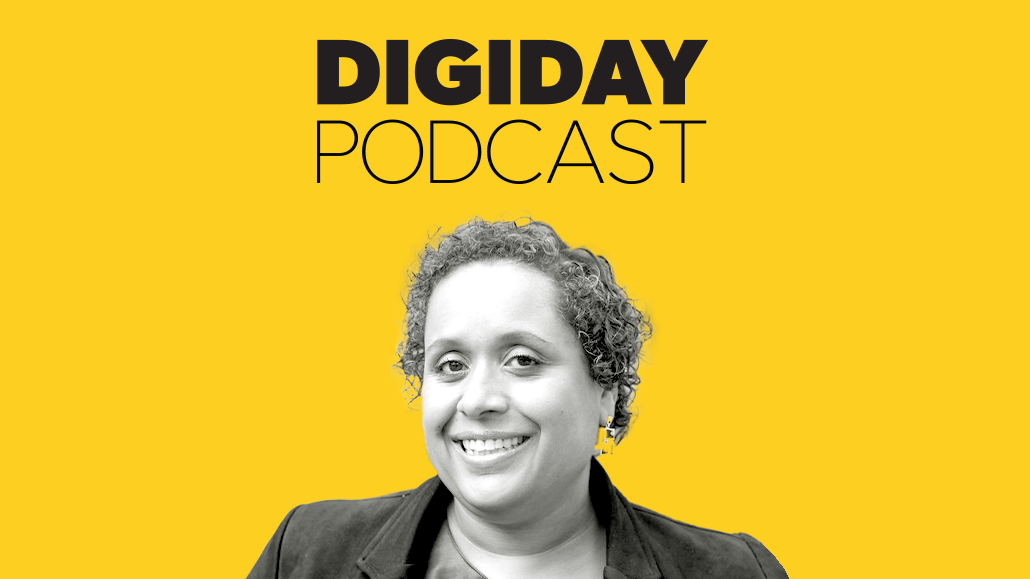Save 50% on a 3-month Digiday+ membership. Ends Dec 5.
‘Do whatever it takes’: How the NewsGuild of New York is training journalists to create strong unions

Subscribe: Apple Podcasts • Spotify
Unionization has been on the rise at media companies over the last nearly three years after the pandemic upended the way publishers work. But it seems that the list of concerns shared amongst journalists, editors and other media employees is only growing and few resolutions have been met during that time.
It’s all created a need for more communication, community rallying and strategic training, to get workers the most leverage possible when communicating with management, said Susan DeCarava, president of the NewsGuild of New York, which represents unions including The New York Times, Insider and The New Yorker.
In the latest episode of the Digiday Podcast, DeCarava discusses why unionization is on the rise and how her team has implemented programs like the Strike School to help embolden media employees to make change within their companies, be it around the return to the office, equitable pay or ensuring equal treatment amongst employees.
Below are highlights from the conversation, which have been lightly edited and condensed for clarity.
Taking it to strike school
We recently had our first-ever Strike School, where our members brainstormed about ways and actions they can take to lead up to things like strike authorization, walk outs and even open-ended strikes. And the thing that we’re hearing consistently across the board is that members are pledging to do whatever it takes to win strong contracts. We have more power than we know.
We accomplish things when we work together, collectively and in community. [We’re] helping workers to develop the tools [needed] to reclaim the value in those properties to reclaim the value in that work that’s being exploited and repurposed, and to build community, because bosses don’t build community bosses make you feel indebted. They say, “You’re lucky to have this job and you’ll take what I pay you.” And what strike school is about is saying, “No, you’re lucky that I’m working in this job and we’re going to decide what our value is. And we’re going to fight to receive that value.”
Putting lessons into action
Recently, The New York Times tried to implement a mandatory return to office. Media is not completely unusual, but it is somewhat striking in the panoply of work in that it doesn’t require people to sit at a desk or to work in a factory or in a workplace. In order to get the work done, more often than not, you’re actually out in the field. And so the issue of, can companies force workers to return to office, has been a big one for us in our industry.
The Times attempted to implement a mandatory return to the office. Our union has taken the position — [which] we believe is supported by the National Labor Relations Board — that returning to office is a mandatory subject of bargaining, which means that they cannot unilaterally implement it. And so members organized a mass refusal to return to the office. It was not a strike. It was not a walkout, because they were still working and working really hard. But they just weren’t doing it in the office.
Being able to say and to demonstrate collectively, that your random arbitrary mandatory return to office date really doesn’t mean anything has been really important. And it was a really strong action that showed that we were united.
The long battle over DE&I
Back in the summer of 2020, in response to the protests over the murder of George Floyd, there was an op-ed that was published by The New York Times by Tom Cotton, that essentially called for an armed response to protesters. And employees across the paper spoke up and talked about how this endangered their lives as reporters, but also the lives of the people that they were covering in these protests. And that led to The Times calling for a deep kind of soul searching of the ways in which their newsroom had been blind to the concerns of their reporters of color and of their Black reporters. And they produced this report some seven or eight months later, that talked about how they could do better.
Here we are at the end of 2022 and this is still an issue at the table in bargaining for a new contract at The New York Times. We are still pushing management to be accountable and to be transparent about how exactly they plan to address these things. And The Times is not alone. We have seen this across the board.
Our members have been fighting very hard for a contractual language that guarantees them [to have] seats at the table, where decisions about [diversity, equity and inclusion] issues are actually being made. Where company execs give a lot of lip service, and talk about how they’re reexamining how their newsrooms are constructed, how performance evaluations are happening, unconscious bias, all of these things, but it’s not transparent. And so what we do is we negotiate to have enforceable measures in our contracts so that our members are actually at that table and are pushing for greater transparency. We push for and fight for, for example, committees that are joint that have management and member representatives at it and have the power to enact new policy.
More in Media

TikTok Shop sheds bargain-bin reputation as average prices climb across categories
An analysis by e-commerce intelligence firm Charm shows average prices climbing across more than a dozen key categories.

Ad Tech Briefing: The Programmatic Governance Council is a bid to reset power dynamics
As tensions over TID and GPID peak, Tech Lab is convening a council to hash out commercial ground rules.

Newsweek is building an AI Mode-like experience to customize homepages for readers
Newsweek is building an AI homepage modeled after Google’s AI Mode to increase engagement and offset declining search referrals.








